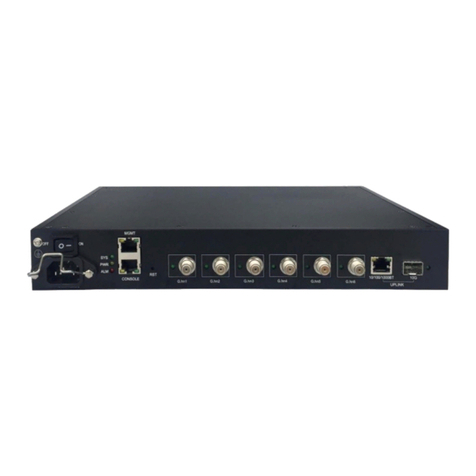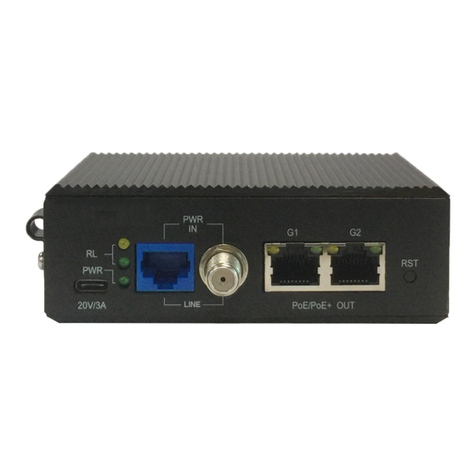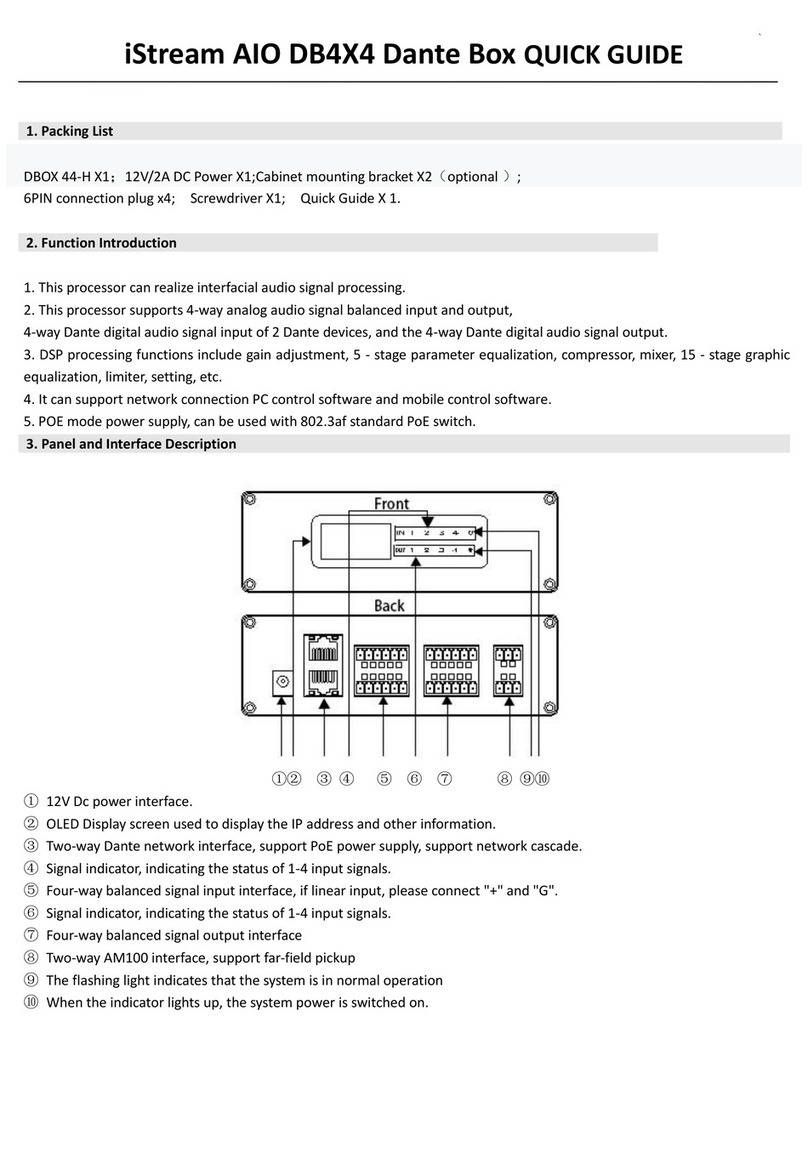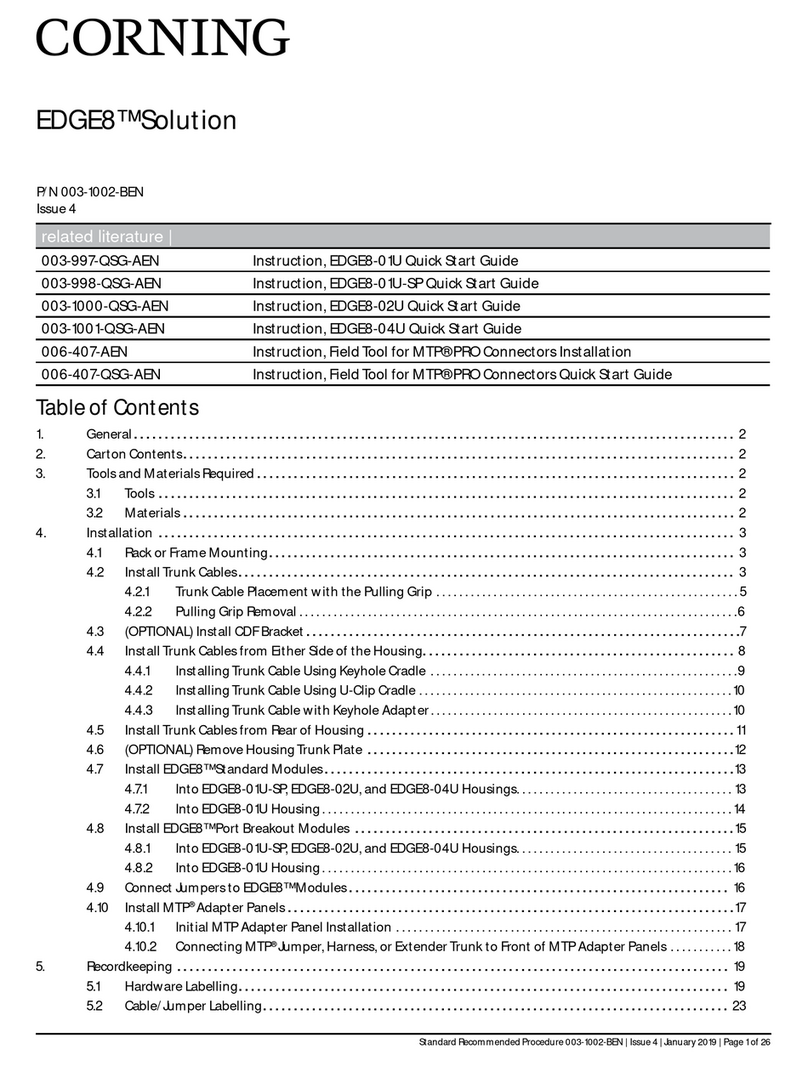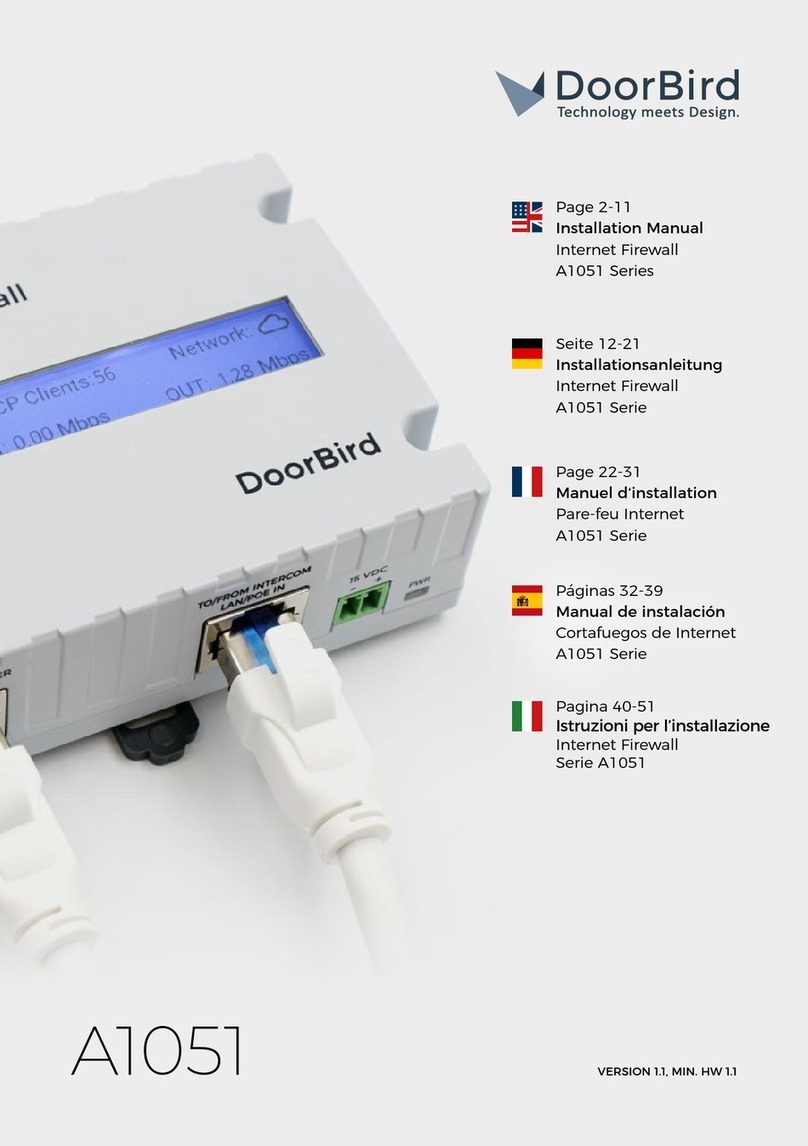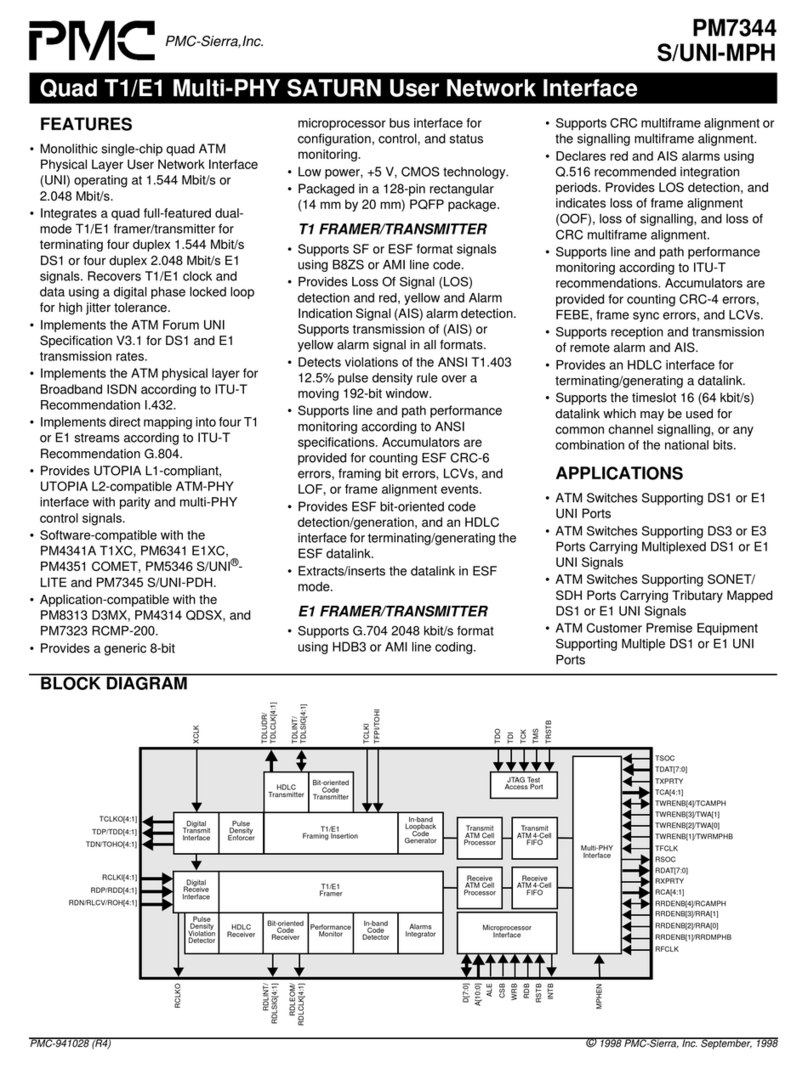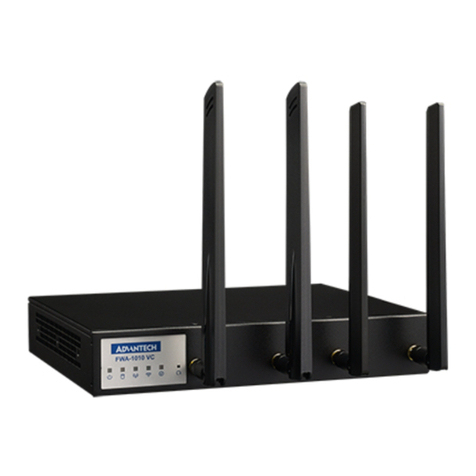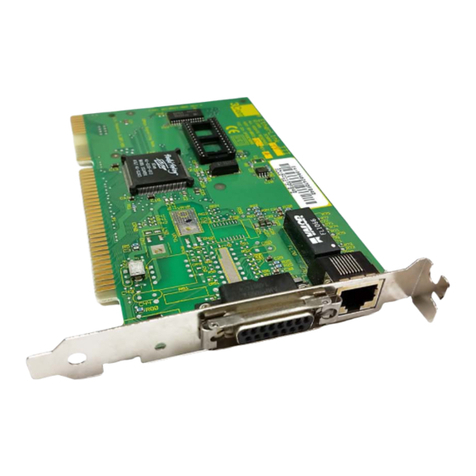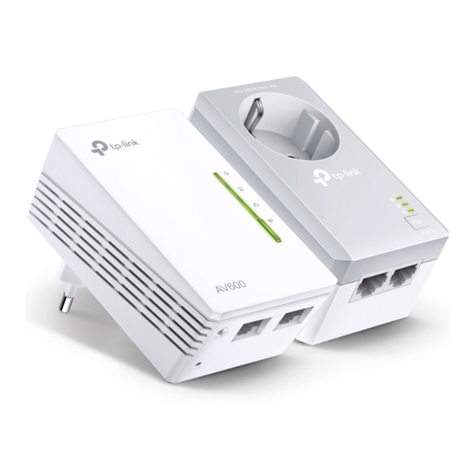GIGA G4202T User manual

G4202T
G.hn Master / Client Set
Instruction manual
Version 1.4
September 2023
For more information and purchase requests
contact info@gigacopper.net
1. Introduction
With the G.hn modem G4202T you can easily extend your
network over existing telephone cables.
The devices are also suitable for forwarding fiber optic
connections from the ONT to the router via telephone line.
The modem supports both SISO (2-wire) and MIMO (4-wire)
operation for higher bandwidth on long cables and
increasing the range of the connection.
Any type of cable can be used for data transmission –both
twisted pair and non-twisted pair, the net bandwidth is up
to approx. 1500 Mbit/s (total download and upload)
depending on the cable length.
The devices are used in pairs –a master and a client. Master
determines the distribution of bandwidth towards the client
and back (download / upload).
In a network with multiple clients, one G.hn switch must be
used instead of multiple master modems. It enables central
administration of the G.hn network and multiple parallel
data connections through vectoring.
2. Packing
G4202T Master or Client
DC-12V/1A Power Adapter
Bracket for wall mounting (from serial no. R3A0269452)
RJ11/RJ11 telephone cable 1. 5m, 4-wire (SISO and MIMO)
Only in DE: TAE-F/RJ11 adapter, 4-pin (SISO and MIMO)
3. Specifications
Dimensions: 103 * 66 * 27mm
Weight: 0.19 kg
Operating temperature: 0°C - 40°C
Power consumption: < 3 watts
4. G.hn specification
G.hn Wave2, 2-200 MHz
Connectiontype: SISO (1 wire pair, 2-200 MHz) and MIMO
(2 wire pairs, 2-100 MHz)
Physical bandwidth (PHY): approx. 1800 Mbit/s
Net width: approx. 1500 Mbit/s (download + upload)
Bandwidth distribution –variable, ex works: 70%
download (direction master to
client) 30% upload (direction client to master)
Maximum allowable attenuation of the cable connection:
75dB
5. Connections
Panel and LED description
Lettering
Description
12V DC
Bus bar
G.hn/LINE
G.hn connection
G1, G2
2x 1 Gigabit Ethernet port
PHONE
Connection for analogue telephone
PWR LED
Indicates power availability
G.hn LED
Status of the G.hn connection
(green –OK, yellow –weak signal,
off –no connection)
G1/G2 LED
Status of the Ethernet connection
Recessed reset button (15 sec.)

6. Use in the local network
Variant 1 –"Point-to-P points": one master and one client
Variant 2 –Connect to Switch G4224T or G4200-8T/4T
7. Use for the distribution of a fiber optic connection ("point-to-point")
8. Connection type and wire assignment on the device (RJ45 plug)
The G.hn connection can be established either via a pair of wires (connection type SISO = G.hn profile "PHONE 200MHz") or
via two pairs of wires (connection type MIMO = G.hn profile "PHONE 100MHz MIMO"). The corresponding G.hn profile
must be configured via the web interface in both modems or via the G.hn switch.
Factory setting: G.hn "PHONE 200MHz" profile.
Core assignment SISO
Core assignment MIMO

9. Installation Notes
The veins of a pair can be laid straight or crossed.
Maximum range of the G.hn connection depends on the type of cable used, the type of connection and the
environment. Typical values for a 0.5 mm twisted-pair cable: Connection possible up to approx. 600/800 meters
(SISO/MIMO), maximum bandwidth of 1500 Mbit/s –up to approx. 100/200 meters (SISO/MIMO).
For longer cables (from approx. 100-150m), the bandwidth can be increased by up to 15% (SISO) or up to 25% (MIMO)
by adjusting the signal level. To do this, the "Range optimization model" must be set to "Long" in the web interface of
both modems or the "LongRangeMode" setting must be activated in the G.hn switch. After the change, both devices
must be restarted.
The negotiated bandwidth can be queried via the web interface of the devices (see point 13).
The distribution of the bandwidth of the G.hn connection is variable. It can be set between 80/20% and 20/80%. By
default, 70% of the bandwidth is reserved for download (from master to client) and 30% for upload (from client to
master). The split can be configured via the web interface of the master modem (menu item G.hn DownStream /
UpStream Ratio) or via the G.hn switch.
It is also possible to loop through an analogue telephone line on the same line parallel to the G.hn signal. To do this,
connect the telephone line and the telephone to the PHONE connections on the G.hn master and G.hn client.
Further information and recommendations can be found on our homepage www.gigacopper.net under the heading
Support.
10. Administration
IP-Address: 192.168.10.252 (master), 192.168.10.253 (client). Login Password: PaternaWork-Reset Password: betera
11. VLAN usage in the network
The devices support VLANs according to the 802.1Q standard.
In the factory setting, the VLAN tags are forwarded transparently. External Ethernet switches can be used for the formation
and use of VLANs.
Instead of external Ethernet switches, VLAN configuration can be done by the manageable G.hn switches G4200-8T/4T and
G4224T. Both Ethernet ports of the G4202T modem can be configured independently of each other.
12. IP address
The modems do not require IP addresses from the local network segment during operation, because they mediate data
traffic via the MAC addresses. By default, they do not obtain addresses from the local DHCP server.
If desired, static IP addresses can be configured or the DHCP client can be activated (menu "IP" in the web interface).
Registration via web interface
Connect your computer to the G.hn modem through the GE
port.
Assign your computer a fixed IP address,
e.g. 192.168.10.100 (netmask 255.255.255.0).
Open a web browser and connect to 192.168.10.252 or
192.168.10.253.
Log in with the default password: paterna

13. Query the negotiated bandwidth
The bandwidths negotiated by the devices for both transmission directions can be queried via the web interface of each
device. The reported values are gross data transfer rates at the physical layer (PHY). The transfer speed atthe application
level is about 15-20% lower.

14. Notching, compatibility with DSL/VDSL
15. Use of Multicast IP-TV
16. Wall mount
For the transmission of multicast IP-TV (e.g. Telekom MagentaTV)
in the network, "IGMP Snooping" must be activated in the
multicast configuration.
The G.hn modems can also be used in parallel with DSL/VDSL
connections with unshielded telephone cables as well as via double
wires of a common cable.
In the case of DSL and VDSL50, the G.hn modems usually do not
require any settings.
For compatibility with VDSL100 (profile 17a) andVDSL250 (profile
35b), the G.hn level in the range 2-17MHz or 2-30MHz must normally
be lowered by 10dB. The setting must be configured in the master
modem (menu item G.hn Spectrum) or in the switch.
There are 4 small black screws in the corners on both
connection panels of the device.
To attach the brackets for wall mounting, first loosen 2
screws on one side, place the bracket and fix it with
these screws.
Repeat the step on the other side.
Other GIGA Network Hardware manuals

